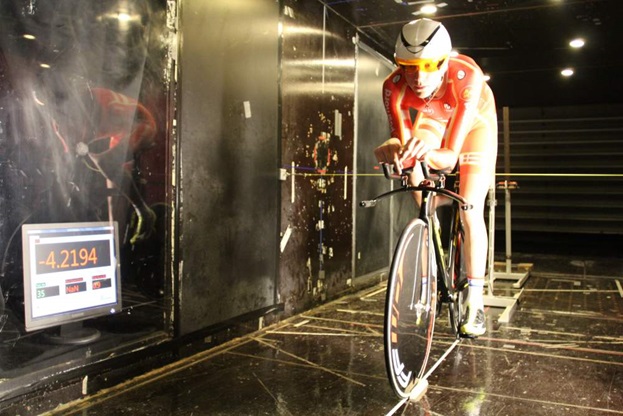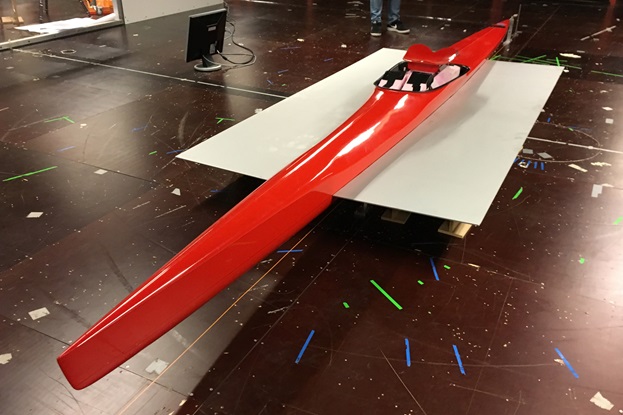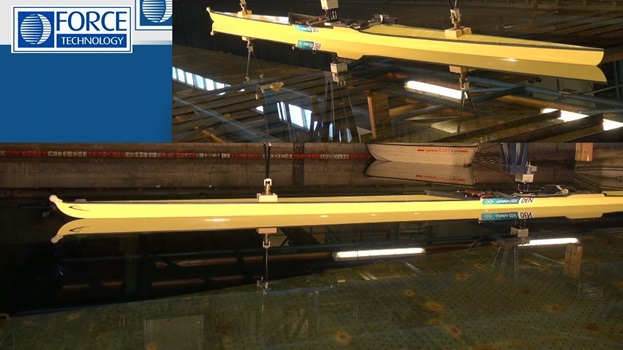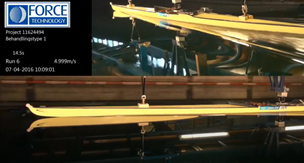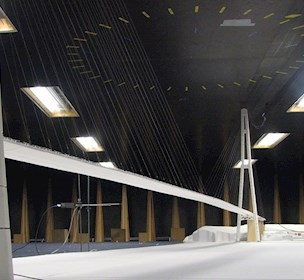Testing of wind and water resistance pushes athletes forward towards the Olympics
Even the smallest adjustment can lead to a medal at the Olympics in Rio 2016. Team Danmark tested wind resistance and water resistance in our facilities.
In elite sports the winner is often separated from the second place by just centiseconds and centimetres. The effort of the athletes makes up 99,9% of the competition, but the proven changes found by the tests can very well make the difference between a fourth place and taking home a medal.
“The implementations of the small changes we recommend don’t take up any of the athletes training time. It’s not a big change for an athlete to switch his suit or to have his boat treated with a different wax, but the results can be very different,” explains Andreas Top Adler, Performance Analytic at Team Danmark.
A record setting helmet
Track racers ride their bikes at up to 65km/h, which makes a vast amount of air resistance their biggest obstacle. This can be minimised by changing the aerodynamics of the athlete’s posture when placed on the bicycle and his attire in the form of clothing and helmet.Team Danmark tested all helmets available on the market in our wind tunnel. The tests were carried out by placing the athlete on his bike in exactly the same position as on the track and exposing him to wind blowing up to 65 km/h. The bicycle was connected to a force transducer measuring the resistance force of the wind. The tests were repeated with different helmets.
When it comes to choosing the best helmet comfort is not the operative word. The athletes only wear it for around 4 minutes (red. approximate finish time for 4000 m team pursuit) making ventilation and cooling elements unnecessary. We focus 100% on speed.” says Andreas Top Adler.
The Danish National Track Cycling Team used the best performing helmet at the European Championship and ended up setting a new Danish record by 2 seconds!
No hair blowing in the wind
The sailing teams face resistance from both wind and water. Team Danmark performed wind tunnel tests to reveal whether clothing of different material, hairdos or headwear could reduce wind resistance. The tests were performed by placing a dummy inside the exact kayak, that will be used during the Olympics.
The team explored how the shape of the athlete’s body affected the wind resistance. This means that the athletes should wear tightly fitting clothing and avoid flaring hairdos to obtain the best results.“We also found that wearing a cap made a difference. The test showed that this could affect the results by a tenth of a second. This might not sound like much but when you are rowing 5 meters per second, this could make a difference of half a meter, which is a lot in a competition where the winner is often found by the use of finish line photos,” Andreas explains.
Testing friction in the water tank
Water resistance is another challenge to the Olympic kayak, canoes, rowing and sailing boats. It is all about generating as little friction between boat and water as possible. Team Danmark tested different surface treatments e.g. waxes and ways of washing the boat.The tests were carried out by treating the boat with different kinds of product and dragging it through our towing tank at the same speeds reached during the competitions. The tests showed that the rowing/kayak teams should actually be using a different method than they were.
Even though the new method has not been tested in a competition yet, Andreas is very confident that it will work: “The test is so valid, that we are convinced it will have a positive effect on our results” he says.Details might result in medals
Andreas has been very satisfied with the entire cooperation: “FORCE Technology’s test facilities are able to detect these tiny details, which is something we can’t find anywhere else in Denmark. Their competent employees have also been able to grasp what we deal with as an elite sports association. The combination of a high-quality set-up and competent engineers has been very efficient” he remarks.“I am confident that these tests will make a difference on our performance at the Olympics. We are very satisfied if the changes bring home an extra medal – and if it is made out of gold we won’t mind that either” Andreas concludes with a smile.
